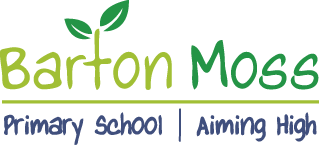Art and Design

Our Art and Design curriculum is carefully crafted to nurture curiosity, inspire questioning, and ignite a passion for learning about the diverse world we live in. We have selected KAPOW for both KS1 and KS2 as it provides a structured progression of skills while offering a broad, balanced, and engaging curriculum for our children.
Art and Design plays a crucial role in supporting learning across the curriculum. The skills developed in these subjects are transferable, helping to promote and deepen learning in a variety of areas. This holistic approach ensures our children are well-prepared for a future filled with opportunities.
At Barton Moss, we place a great emphasis on the importance of art and design. Art and design gives our children the opportunity to learn how to express themselves through their own creativity and through the awareness and celebration of our own and other’s individual uniqueness.
There are no right or wrong answers and no limit to our imaginations!
Our Art and Design curriculum aims to inspire pupils and develop their confidence to experiment and invent their own works of art. It is designed to give pupils every opportunity to develop their ability, nurture their talent and interests, express their ideas and thoughts about the world, as well as learning about art and artists across cultures and through history. We have ensured also, that there are many opportunities within each unit to develop oracy skills through the discussion and wider appreciation of art.
We want our children to know about some of the great male and female artists and designers and their differing cultures and histories. We want them to question what 'great' means and ask what makes a piece of art 'great'. We want them to learn not only about well-known artists but other artists too. We will celebrate local artists and designers and learn about newer and less well-known craftspeople.
Our curriculum supports pupils to meet the statutory requirements of the National curriculum and has been written to fully cover the National Society for Education in Art and Design’s progression competencies.
In the early years, Art and Design is taught through a blend of child-initiated exploration, adult-directed learning, and open-ended play. Children are encouraged to express their ideas, thoughts, and feelings through creative activities, with teachers providing both focused and independent art tasks. These activities allow children to explore their imaginations and develop their creativity through play.
Sketchbooks are used as spaces for exploration and practice, with teachers guiding children to evaluate and refine their work. These sketchbooks, along with classroom displays and photographs, will serve as evidence of learning and progress.
We aim to embed Art and Design throughout our whole school curriculum, seizing every opportunity to enhance learning through creative expression. Children will also use reading and writing as tools to present their art knowledge, applying their skills in other subjects. Teachers will ensure the use of specific art vocabulary, as identified in the knowledge organisers and progression documents, and will plan lessons that introduce students to both well-known and less well-known artists and designers who inspire them.
Throughout the year, we will enrich the curriculum with themed days, allowing for imaginative lessons around exciting topics. Teachers will also plan educational visits and experiences outside the classroom to broaden our children’s knowledge of art, artists, and designers, inspiring and engaging them further in their learning.
